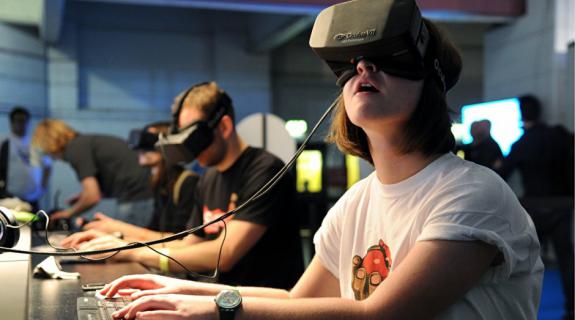One of the biggest players in virtual reality, Oculus Rift, was bought by Facebook last year for a cool $2 billion. Last month, Oculus announced its partnership with 20th Century Fox to distribute films through Oculus Cinema.
Once a gaming tool, VR has devoted 2015 to making the medium a viable Hollywood partner, with just one problem: The content isn’t there yet.
Through its deal with Fox and Lionsgate, films like The Hunger Games, Birdman and Die Hard will be available to rent or buy through Oculus. Samsung Gear and Jaunt VR are adding financial backers and content partners as well, with Jaunt just signing on Disney as its lead investor.
The funding is growing for several of these VR devices, but consumers still think of VR headsets as a gamer’s tool, not a way to watch movies and TV.
Most virtual reality companies, according to The Hollywood Reporter, say their next big obstacle is creating original content to live on virtual reality platforms - not just a concert stream or movie extras.
Oculus Rift launched its own content division, Oculus Story Studio, to figure out what content works on the platform. The Story Studio reportedly plans on releasing five animated shorts next year.
The other issue is availability. Most VR headsets won’t hit the market until 2016. Low-cost options like Google Cardboard can be used with a smartphone and thus are more accessible, but still are often seen primarily as a gamer’s tool.
The platform has, however, been used successfully for marketing those movies and TV shows. Fox has promoted The Martian via Oculus, MTV added a virtual reality red carpet to this year’s VMAs and Syfy teamed up with Google Cardboard for an immersive VR experience for The Expanse at this summer’s Comic-Con.
Read more at The Hollywood Reporter.
Brief Take: Taking the time to decide which content best suits VR is a risk because everyone wants the first big hit, but it is also probably wise: we all saw what happened with 3D.
Image courtesy of Oculus Rift
Tags:













































__twocolumncontent.jpg)











